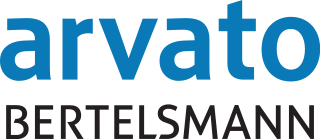
Safeguard your cloud native applications from build to deployment with vulnerability scans, image assurance, runtime security and network segmentation.
Ensure your environment’s integrity with strict policies that protect assets, control access and implement continuous verification.
Achieve regulatory compliance and governance with built-in audits and reporting. Simplify incident investigations with real-time visibility across detailed logs and reports.
Seamlessly incorporate robust security into existing DevOps workflows with automated security policies and CI/CD pipeline integration.

“SUSE NeuVector provides the network inspection, visualization, and security needed for dynamic container environments. The solution integrates easily into our automated workflow and the built-in intelligence lets us scale quickly. It even helped us debug network connections from misconfigured application updates.”
Tobias Gurtzick, Security Architect
Top 4 Features of the NeuVector Container Security Platform
Kubernetes-native, 100% Open Source, Zero Trust Security
Profile Risk with Vulnerability Management
- Scanning and admission control during build, test and deployment.
- Scans containers, hosts, and orchestration platforms during run-time.
- Audits host and container security with Docker Bench and Kubernetes CIS Benchmark for security tests.
- Risk Scores and Compliance Reports.
Protect Data in Production
- Protect containers against attacks from internal and external networks.
- The only real-time identification and blocking of network, packet, zero day, and application attacks like DDoS and DNS.
- Identify and block at Layer 7 between container and pod pairs.
Automated Prevention and Policy
- DevOps teams deploy new apps with integrated security policies to ensure they are secured throughout the CI/CD pipeline and into production.
- Discover application behavior and services to isolate them from attacks.
- Streamline communication between security and development.
Integrations and Platforms
- Runs all major cloud platforms including AWS, Azure and Google Cloud Platform.
- Integrates with all leading CMPs including Rancher, RedHat OpenShift, and more.
- Supports SYSLOG and webhooks for notifications into alerting systems.
- LDAP integration and single sign-on with SAML support.
Get Started with NeuVector

Consulting
Your modernization journey is as unique as your business. We work with you and your team to identify starting points, design solutions, implement best practices, and optimize for continual success.
Learn More ›
Training Services
If skills are inhibiting your transformation, SUSE Training is your answer. Our comprehensive portfolio of courses and certification paths provide the training that fits your needs, your schedule, and your business.
Learn More ›
Premium Support Services
Extend your SUSE support with direct, named access to a resource who knows you, your team and your infrastructure. Keep up with the pace of change and customer expectations, while still taking care of every day business.
Learn More ›
Blog
How NeuVector Can Protect Against the XZ Backdoor Attack CVE-2024-3094 in Kubernetes Environments
Security researcher Andres Freund reported to Debian that the xz/liblzma library had been...
How NeuVector Leverages eBPF to Improve Observability and Security
Extended Berkeley Packet Filter There’s been a lot of recent interest in eBPF (extended Berkeley...
NeuVector UI Extension for Rancher Enhances Secure Cloud Native Stack
We have officially released the first version of the NeuVector UI Extension for Rancher! This...

